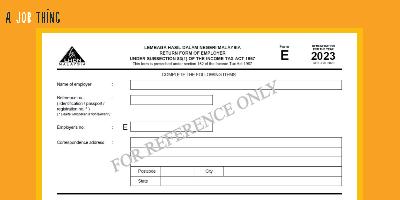
HR Guide: The Basics of Performance Improvement Plan
Create Job Description Using AI
Write appealing job descriptions for any job opening to attract the most qualifield and suitable candidates. FOR FREE.
try now
Many managers believe that dealing with a struggling employee is always difficult. It is not easy to transform a struggling employee into a high performer. Unfortunately, many small businesses simply aren't well equipped to rehabilitate such employees. Though some companies use the "three strikes" system, most organisations would rather dismiss the employee or motivate them to quit.
But the times are tough. The global pandemic has made it even harder for employees to be productive and engaged. A company can't just dismiss and replace every employee. What a sensible organisation would do is to create a performance improvement plan to help re-engage struggling employees.
What is a performance improvement plan?
A performance improvement plan is a document given to a struggling employee, detailing information on what they need to do to achieve success in the future.
These plans discuss what the employee is struggling with and how they could make improvements at work. Often written by an HR manager or supervisor, performance improvement plans are meant to assist employees in moving forward and succeed.
How to implement a performance improvement plan
Step 1: Document
The supervisor should document what is happening to the employee. It's crucial for the supervisor to be detailed, specific, and honest. Supervisors should also include instances of problematic or subpar behaviour. Here are some things you can include in the documentation of performance issues:
- Description of the employee’s performance
- Instances of the employee’s subpar work
- Explanation of how the employee’s actions affected others and the company
- Evaluation of what the employee’s actions mean in general
Step 2: Action Plan
After documenting what the employee has been doing wrong, the supervisor should write an action plan. The action plan should detail what the employee needs to do to improve on their performance and explain to them what will happen if they do not improve.
Step 3: Hand over the document to the manager and HR
Before setting up a meeting with the employee to discuss the performance improvement plan, the supervisor should hand over the document to the manager and HR. The manager and HR should make sure that the performance improvement plan is objective, factual, and does not contain personal sentiments.

Don't forget to compliment the employee whenever they are showing progress.
Step 4: Explain the need for performance improvement plan
During the meeting with the employee, the supervisor should explain why they feel the need to write a performance improvement plan. Additionally, the supervisor needs to explain the content of the plan and discuss how the employee should improve.
These meetings need to be highly structured and conducted in a calm manner. The supervisor should be ready for the employee to argue or dispute their claims.
If this happens, instead of replying with aggression, it is crucial for the supervisor to point to the concrete evidence detailed in the report and state that their sole aim is to help the employee.
Step 5: Follow up
At the end of the first meeting, the supervisor and employee should schedule follow-up sessions. Depending on the situation, these follow-up meetings can either be weekly, bi-monthly, or monthly. In these follow-up sessions, the supervisor and employee should discuss if there's any progress being made.
Step 6: End
There should be a clearly set ending to the performance improvement plan. In the last follow-up meeting, the supervisor should determine if the employee has made significant progress.
If there has been no notable improvement, the supervisor should consult with HR or their manager to see if the employee should be demoted, reassigned, or in the worst-case scenario, dismissed.
But, if the employee has improved their performance, the employee should be congratulated for their hard work and dedication.
Are You Short on Staff? Reach four million job seekers on Maukerja, Ricebowl, LinkedIn, and more when you post a job on AJobThing.com
Register today!
Source: Good&Co
Related articles
HR Guide: How to Manage Job Applications
HR Guide: Evaluating Candidates with Employment Gaps
HR Guide: Probationary Period Tips & Templates





